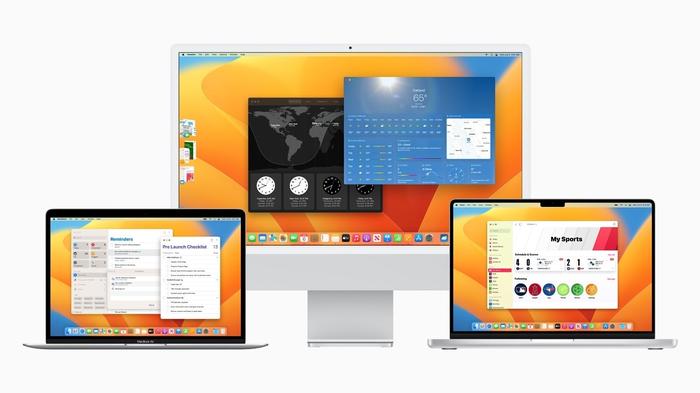Why Apple's upcoming public betas can work for IT
- 13 June, 2022 12:15

With Apple set to release the public betas of macOS 13 "Ventura" and iOS/iPadOS 16 sometime in July, it’s inevitable that some business users will want to get an early look at what’s coming. The typical IT reaction is to try to block users from trying out beta software, but that may not be the most advantageous way to handle what's coming.
In fact, IT executives can actually make these betas — and eager early adopters — work in their favour.
Developer betas of the new OSes were released after Apple's Worldwide Developer Conference (WWDC) keynote. The public betas that will follow can be useful for a manufacturer like Apple in terms of accelerating feedback and releasing bug fixes during the development process. They can also be exciting for users who want to try out the new features of an upcoming OS before everyone else gets their hands on them. (The final release for all of these OSes won't be until this fall.)
But they do pose obvious challenges for IT, especially if beta testers install pre-release software on their primary devices that they use for work. Bugs, issues with existing apps, and confusion about new or altered functionality are often part of the beta-testing experience. So users who install unsupported software on work devices can lead to support calls and employee downtime if they can't access core tools.
Remind beta testers they're installing pre-release software
Keep in mind that as mobile OSes have shifted much of the upgrade process to users, it's likely that IT executives won't be able to stop everyone, particularly if they're installing on a device they own.
The best piece of advice here is to advise users that want to sign up as beta testers that they should do so using a secondary device instead of one they rely on for critical work and personal tasks.
Crafting a nuanced message is key, one that actually describes the challenges that they may encounter in a friendly, advisory manner yet doesn’t alienate those who want to be part of a beta program.
Explain that, yes, they will get to use new features before anyone else — but also that there may be challenges that could impact the ability to do their job if they install on their primary device. And be sure to note the potential impact to personal tasks they rely on that device to accomplish.
 Credit: Apple
Credit: Apple Turning beta testers to an advantage
Like most early adopters, many of these beta testers will likely be somewhat tech savvy, though their savviness may vary. As a result, most organisations will encounter the public beta at some point this summer. Ideally, it will be on a secondary device, though some people will probably still install on their primary device.
Users can actually recruit these users as helpful allies.
One of the challenges in today’s landscape is that it’s generally expected that IT departments are ready for new technologies to walk in the door the day they're officially released. That means users have a limited window of opportunity to vet them now, test enterprise and key third-party apps with them, and build a knowledge base of issues that support teams may encounter.
All of that is a tall order to pull off in the span of a few months with existing staff and all of it requires testing the betas. If IT executives recruit beta users, they can do much of that testing for them. They can see which apps have issues, which workflows need to change, and report back on any general support issues. That gives IT a greater ability to prepare, both in terms of updating apps and in terms of developing support and user-facing resource material.
The approach requires a bit of a culture shift for many organisations. IT staffers will need to develop a close working relationship with these users and will need to actively solicit their input, advice, and feedback.
On the flip side, it makes preparing for new technologies easier and allows IT to be better prepared when those technologies are officially released. It also fosters a closer relationship between IT and workers that want to use the latest tech. In the process, it it may even help users deal with any shadow IT ops going on across the organization — or at least help identify them — as the people looking to try out a beta are likely the same people who would actively install tools or services without bothering to inform IT.
Of course, this doesn’t mean everyone should be allowed to try beta software — and IT executives shouldn’t just ignore testers that they've recruited. Nor does it mean that IT staff should ignore the betas themselves (ideally, they’ll be using the developer betas rather than the public ones).
But embracing the coming public betas from Apple could give IT a leg up on what's coming this fall — if they can develop a trusted working relationship among everyone involved.

